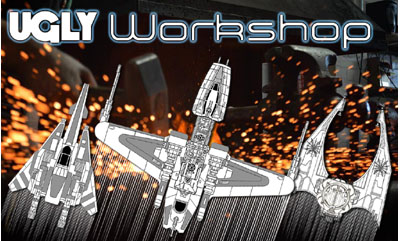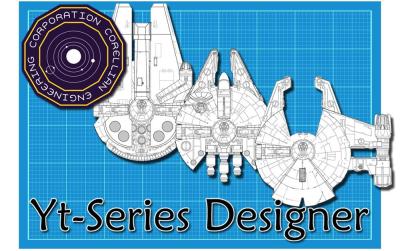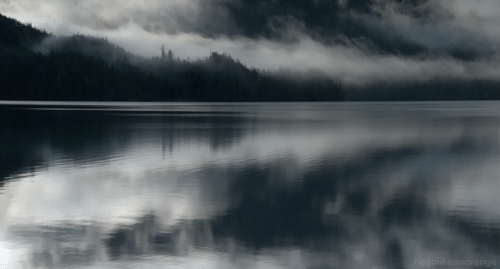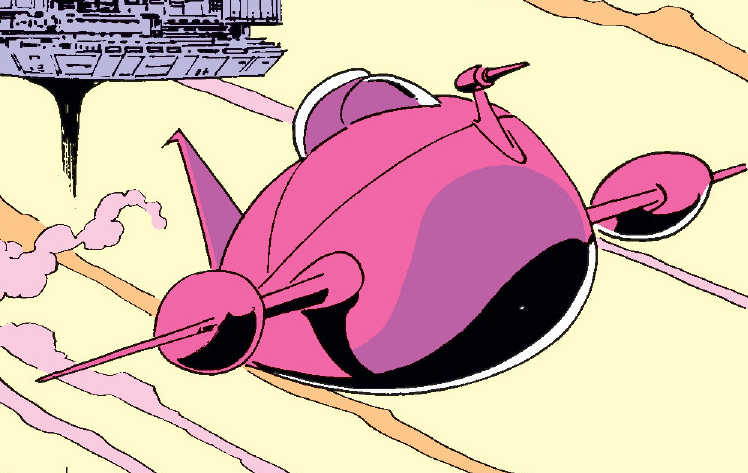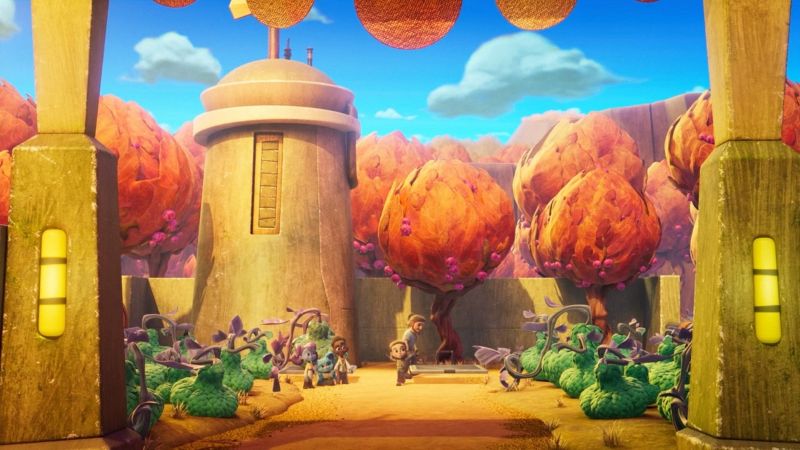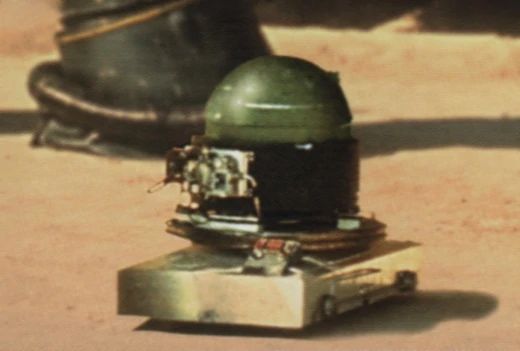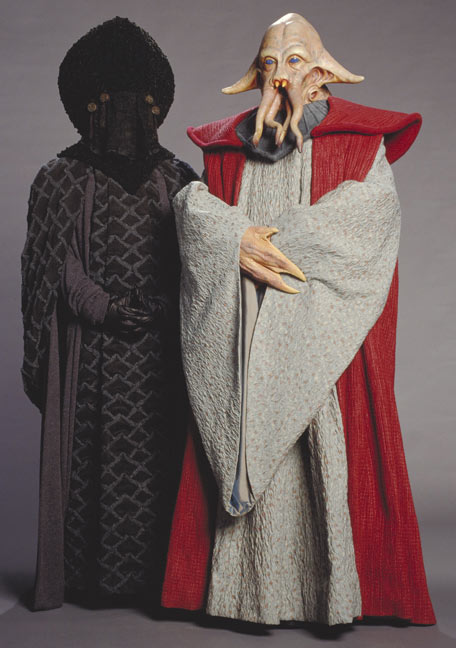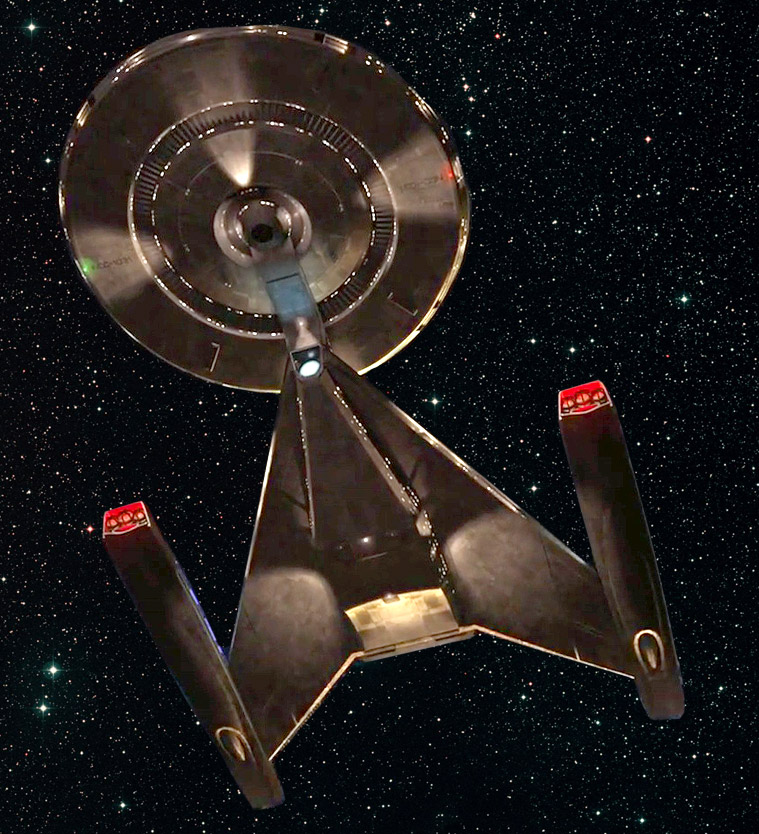 MCQUARRIE II-CLASS DSE
Craft: McQuarrie II-class DSE
Model: Unity Stardrive Corp McQuarrie II-class deep space explorer
Affiliation: Separatists/Confederacy of Independant Systems, several independents
Type: Exploration vessel
Scale: Capital
Dimensions:
-Length: 576m
Skill: Capital ship piloting (McQuarrie II-class DSE)
Crew: 328
-Gunners: 56
-Skeleton: 48/+5
Crew Skill: Capital ship gunnery 5D, capital ship piloting 5D+2, capital ship shields 4D+2, sensors 6D, starship gunnery 5D+1
Passengers: 400 (science staff)
Cargo Capacity: 150,000 metric tons
Consumables: 4 years
Cost: 19,000,000 (new); 12,00,000 (used)
Hyperdrive Multiplier: x2
Hyperdrive Backup: x14
Nav Computer: Yes
Maneuverability: 2D
Speed:
-Space: 5
-Atmosphere: 295; 850kmh
Hull: 5D
Shields: 2D
Sensors:
-Passive: 30/1D
-Scan: 60/1D+2
-Search: 120/2D
-Focus: 4/3D
CRAFT CAPACITY:
-12 Light Shuttles/Transports or Starfighters
-OR 6 Medium Transport Shuttles (x2 Starfighters)
-OR 3 Light Freighters (x4 Starfighters)
-4 Worker Pods
WEAPONS:
12 Turbolaser Cannons
Location: Mounted dorsal & ventral upper hull
Fire Arc: Turret
Crew: 2 (12)
Skill: Capital ship gunnery
Scale: Capital
Fire Control: 3D
Range:
-Space: 1-5/20/40
-Atmosphere: 100-500/2/4km
Damage: 4D
Rate Of Fire: 1
12 Dual Laser Cannons
Location: Mounted dorsal & ventral upper hull
Fire Arc: Turret
Crew: 1 (12)
Skill: Starship gunnery
Scale: Starfighter
Fire Control: 3D
Range:
-Space: 1-3/12/25
-Atmosphere: 100-300/1.2/2.5km
Damage: 3D
Rate Of Fire: 1
8 Concussion Missile Launchers
Location: Mounted in front sides of lower hull
Fire Arc: 4 Front, 1 right, 1 left, 2 back
Crew: 2 (8)
Skill: Capital ship gunnery
Scale: Capital
Fire Control: 3D
Range:
-Space: 2-10/25/50
-Atmosphere: 200-1/2.5/5km
Damage: 7D
Ammo: 10 each (40 total)
Rate Of Fire: 1
Special: Warhead variants (see below)
4 Tractor Beams
Location: Mounted in aft hull near shuttle bay
Fire Arc: 2 front, 2 Back
Crew: 1 (4)
Skill: Capital ship gunnery
Scale: Capital
Fire Control: 4D
Range:
-Space: 1-3/10/20
-Atmosphere: 100-300/1/2km
Damage: 4D
Rate Of Fire: 1
DESCRIPTION:
After four hundred years of ups and downs, Unity Stardrive Corp brings an updated version of the McQuarrie class to the more modern era of Star Wars history, the McQuarrie II-class Deep Space Explorer. Finding oitself on the side of the Confederacy of Independent Systems during the Clone Wars, USC was approached by Separatist forces to update their aged McQuarrie DSE, as the four hundred year old ships were still in service, and could still take quite a beating in a fight. USC produced thousands of McQuarrie IIs for the Separatists, both their military and for their little-known Exploration Corp (ExCorp) branch.
During the Clone Wars, CIS ExCorp were tasked with crewing McQuarrie II DSEs and finding new worlds to tap for resources and to use as military outposts during the war. While this was the most well known example of how McQuarrie IIs were used during the Clone Wars, many variants were known to be produced, such as military personnel transports, supply ships and freighters, combat support vessels, and others. Though USC's production of the McQuarrie II was meant as an exclusive deal with the CIS, some still found themselves into the hands of Independents, especially after the war ended, and would be heavily modified, just as the original McQuarries were centuries earlier.
There's even a rumor that after the Clone Wars had ended, Imperial forces came across a group of privateers using salvaged McQuarrie II-class ships. Ordering them to hand over their "Confederacy" ships, the privateers declared themselves the Sons of the Stormbirds and proceeded to attack the Imperial ships. No one knows who won after that though.
While the Galactic Empire was on the rise and nationalizing Separatist resources, the McQuarrie II DSE may have peaked someone's interest in the Empire, but ultimately it was discontinued. This didn't change the fact that thousands of the class had been produced and launched from USC shipyards during the Clone Wars, many of which wound up in the hands of independent ship owners across the galaxy after the Clone Wars were over. And these ship were just as noteworthy as their predecessor....
LAYOUT
Labs, Workstations, and Other Facilities
The McQuarrie class deep space explorers are menat for long term distance and travel. To this end, they have consumables for up to two years, and much of their cargo space has been converted not only for passengers and their personal and scientific gear, but also many well stocked and equipped laboratories and technical workstations to allow them to do their research. Sometimes these labs have more than one scientist or technician making use of them for multiple projects, as this is still a starship with only so much available space to make use of. These labs can do be used for almost any project, from xenozoology, microbiology, chemical and chemistry, stellar cartography, and various levels of quantum physics and astrophysics, among many others. These labs can also be converted and repurposed as desired. The other workstations are often for technicians that are not devoted scietists but engineers and techies who deal more with the hardware, franging from physical labor with large machines and devices, labor with smaller, more fine-tuned and detailed machines, computer techs involved with both hardware and software, and even materials fabrication of practically any kind needed during long exploration missions using particle fabricator machines whose ancestors harkon back to devices once called "3D printers". The particle fabricators are one of the must unsung yet important parts of the ship, as they can produce not only materials, but also specific shapes, of various sizes oncluding very large sizes, can combine multiple materials to make various types of compounds, and is essential for making any and all replacement parts the ship would ever need. There are several types of particle fabricators on board, most used for parts and components, though some have been set aside for producing common materials like clothes, and for producing foodstuffs. The food version is used rarely as the food is often criticized as not being as good as the real thing (though most foods in the Star Wars galaxy are probably synthetic anyway), however these are still aboard the ships due to the potential of stored consumables becoming corrupted through any number of possible means, and make a welcome alternative of food if and when the crew gets hungry enough. As these are called "particle fabricators", they can use raw materials of almost any kind to produce results, though the more work they have to put in converting raw materials into something else, the longer and harder they will have to work. For instance, using metal to produce other metals is relatively simple and takes little time, but taking raw ores and converting them takes more time, and taking non-metallic materials and converting them to produce metals could take over a day at best for simoke items, and many days for larger items, if they are kept simple like wrenches or hull plating. One reason the food fabricators are not used, aside form taste, is that the best raw materials used in them should be materials already used for foodstuffs, such as discard food remnants and other waste, though the fabricator eliminates any form of contamination, and in fact can take any contamination in these wastes and completely convert it into an edible foodstuff in the process. It should also be noted that the fabricators deliver priduct and item results as good as the designs used in their computers, which can and usually is done by a technician who specializes in such design elements. Unfortunately, while food fabricators also work this way, there are rarely any technicians aboard who know how to "design food" and the food fabricators are left to use default factory installed food designs that are often bland at best. All of these facilities, computers, machinery, and various other equipemnt in both labs and storage are taken account in how much cargo space is taken up in the conversion of the McQuarrie class into an exploration vessel. The science and exploration labs tend to be displaced throughout the upper hull saucer section, while the techinical and engineering workstations tend to be in the lower hull section.
Shuttle Bay
The ship's shuttle bay is located in the aft of the lower hull. Though this is positioned between the ship's ion engines, the vessel's design and the common sense of any decent pilot is such that approach, embarking and disembarking is an easy and smooth process with very little danger. While the "craft capacity" above lists 12 starfighters or light shuttles, most often these explorer vessels have various craft that can carry 1-6 passengers plus cargo that are roughly the size of a starfighter, built less for combat with little-to-no weapons, but having better sensors than most starfighters their size usually would, though they may have comparative speed due to the need to evade hostile threats and environments. These can be used to expand the ship's sensor detecting capabilities, as well as allowing for closer inspection of odd things found in space, and even performing reconnaisance of derelicts in space or planetary atmospheres and geography. The listed medium transport shuttles are craft usually bigger than starfighters that can carry 1-12 passengers, long term away gear, various scientific equipment depending on mission and need, and perhaps even a light ground vehicle (1-4 passengers) or 2 (speeder bikes), and are often meant for survey, investigation and exploration teams that are leaving the ship and heading to the ground of a planet or into a derelict ship or space station, etc, and are intended for investigation and exploration teams that will be away for prolonged periods of time...."away teams".
GAME NOTES:
Hangar and Craft Capacity
While the ship is roughly twice the length of the original (and therefor roughly somewhere between x4 to x8 the mass and tonnage), increasing the number of crew, passengers, and cargo space, the hangar deck's craft capacity is not much bigger (can fit 2 more starfighters) as this style of ship doesn't need much in the way of extra craft. "Light Transports" is for ships that are about the size of a starfighter, but not meant for combat, and could easily transport 4-6 people to and from a planet and 60 metric tons, plus 10 metric tons per passenger spot not occupied. Medium Transports count as x2 that of a starfighter or light transport, so they can carry 8-12 people and 120 metric tons plus 10 more per passenger spot not occupied. "Light Freighters" counts for ships around Millenium Falcon sized.
Cargo Capacity could also be converted for more hangar space.
Add-On Pods
While odd looking in the ship design, these additions to the hull increase the ship's overall speed, maneuverability, sensors, and shields. When these are damaged or destroyed, their removal decreases these traits and affects the ship's performance. The loss of a pod decreases Speed -1, Shields -1 pip, and Sensors decrease -5 Passive range, -10 Scan and Search ranges, -1 Focus Range, and -1 pip to bonus dice (the loss of both pods reduces Sensor ranges to half, and -2 pips from bonus dice). While the previous McQuarrie class DSE had its Add-On Pods mounted on S-Foil spacial maneuvering surfaces, the McQuarrie II does not have these pylons, instead these functions have been built directly into the Add-On Pods. The loss of a pod decreases the ship's maneuverability by -1D. The loss of both pods reduces the ship's Speed to 3, Maneuverability to 0D, Shields to 1D+1, and Sensors to Passive: 15/+1, Scan: 30/1D, Search: 600/1D+1, Focus: 2/2D+1.
Sensor Dish Add-On (500,000 credits)
As the Deep Space Explorer is a variant of the original general purpose McQuarrie II-class that includes what were intended as after-market upgrades, this version is known to have further upgrades to enhance the ship's abilities. One add-on is an expansion to the sensors in the form of a sensors and communications dish, often mounted at the central front of the wedge-shaped lower hull. This add-on costs 500,000 credits (half what the McQuarrie I had, as 400 BBY this would have been much more expensive), and enhances the Sensors as +10 Passive range, +20 Scan range, +40 Search range, +2 Focus range, and +2 pips to the Sensor bonus dice. As this variant is meant for deep space exploration, most ship owners who can afford this upgrade usually purchase it as soon as they are able, though many owners do not, and many others who use their McQuarrie class ships for shipping lane travel actually prefer not to have ot, as it makes their ship look more like the original cargo vessel the ship class was intended as, therefor luring pirates into a fight only to be surprised by the ship's impressive firepower and combat abilities.
Concussion Missile Variants And Other Mods
While the McQuarrie II explorer variant has weapons like laser cannons and missile launchers installed to defend itself against enemies and hostile threats that lie in the great unknown, often these weapons were used in uninteded yet strangely beneficial ways. Many crews of these ships were lucky to possess individuals who were gifted with technical aptitude as well as imagination and creativity. If and wehn these ships and their crews find themselves trapped in situations where they could not escape with brute force, these individuals would often have ideas that involved modifying equipment and weapons aboard the explorer vessels to gain the upper hand and survive against all odds. In the case of the concussion missile launchers, the missile warheads would often be altered or replaced to deliver entirely different effects than what they were designed for. Possible alternatives to standard damage Concussion Missile warheads can include, but are not limited to: Ion or Mag-Pulse warheads that do ion damage; Plasma Warheads that deal damage directly to the shields (Shield Busters); Gamma Ray Warhead that deals damage directly to biological organisms, bypassing the hull, but only if the Shields are down, otherwise it has no effect. Scientists and technicians aboard these vessels can use the scientific and technological equipment aboard their well stocked and equipped exploration and science vessels to modify various concussion missiles to act as power disabling ion warheads, shield-busting plasma warheadsm etc, and up to GM discretion. While these make great examples of what can be achieved with a well stocked and equipped science and exploration vessel with a creative crew, often the sky is the limit with what can be achieved if/when the right tools and resources are available.
Neck Hull Section
Unlike the McQuarrie I, the neck of the McQuarrie II is built to be much sturdier than the original design, and incurs no weaknesses if attacked, being just as resilient as any other part of the hull.
GAME DESIGN NOTES:
When looking at the first McQuarrie I did (I'll call it the Mc1 for short), I couldn't remember why I had decided on the 210 meter length of the ship. More recently I found out that the Discovery itself is 750.5 meters long. So, thinking I'd just go with it, I had been wanting to use this pic as an in-between type of ship anyways, so I just evolved the ship as it advanced over time. Still not happy with the Mc1's 210m, but unless people bring it up, I guess I'll leave it as is.
This ship is well over twice the size of the Mc1, but I wanted it closer to the actual Discovery's size than the Mc1. The Mc1 will have the much longer nacelles to explain its length, along with more advanced tech installed in it. Over all, this ship has twice the stuff the Mc1 had. Twice the length, twice the weapons (technically still 12 laser cannons, but they're now Dual laser cannons with more damage, and I added actual turbolasers do to increased size, power, and tech to allow more weapons and power for them), and increased cargo capacity though I'm not sure if this is good as is, or if it should be higher.
HISTORY
History Recap - circa 400 BBY
Around 400 BBY, a galactic recession on the starship market leading to cutbacks and downsizing from Kuat Drive Yards and its subsidiaries, among other companies involved in the manufacture and sales of starships, notably in the Core Worlds region, resulted in several previous employees pulling strings and taking advantage of several factors that led to the creation of Unity Stardrive Corp, also known as USCorp or USC. USC built ties with the world of Ventis, located in the Ko'lamiig system of Lomiig space sector in the Colonies region. Previously a resort world known for solar tourism and retirement among its beautiful cylinder-design orbital colony habitats, Ventis was now, as of circa 400 BBY, a disenfranchised world that had the galactic economy turn its flourishing business into an ongoing centuries-long depression as its population abandoned the world for better foryunes and brighter futures elsewhere out of necessity. After years of preparation and secret backing by Hoersch-Kessel Drive (HKD) to spite KDY, as well as converting Ventis' abandoned orbital habitats into working shipyard facilities, USC turned Ventis into a starship design and production facility.
The reult of this endeavor was the McQuarrie class vessel, a hyperdrive capable light capital scale starship that was well received by interested parties. Especially after the viral Holonet spread of holovidlog recordings from the independently owned, heavily modified and audaciously painted McQuarrie variant, the Neutron Stormbird. The Stormbord showed that the McQuarrie could hold its own against raiders and pirates, something that traders and freighter captains were having trouble with along the Hyperspace trade lanes of the galaxy during this time of economic recession. Even more so, this reached the eyes and ears of mining companies that needed newer, yet not-expensive, vessels to replace their transport and escort ships. These same companies had discovered previously unexplored regions of space in the Outer Rim region that potentially held a vast wealth of untapped resources just waiting to be mined and sold. While the mining companies needed newer ships, they needed exploration and survey vessels even more, equipped with the right equipment to survey worlds quickly and find the planets ripe for claiming a stake on.
This resulted in the McQuarrie's most well known variant, the Deep Space Exploration, or DSE, model, which was the highest selling variant for many decades during USC's initial long-running success. The McQuarrie DSE would eventually fade away as sales of this particular model would drop off over time, but during its decades-long run the McQuarrie was at the head of a new "Gold Rush" to explore and stake claims in uncharted space. As the DSE model dropped in importance, the McQuarrie's original model, an easily modofoable multi-role transport and freighter took precedence, and continued to sell well for over a century. During the first several decades, USC donated several McQuarries to Ventis, modified with better hull, shields and weapons to be the world's fleet for a planetary defense force, as USC eventually moved their headquarters further along the Hyperspace trade lanes into the Expanse region, but always maintaining ties to Ventis and never forgeting the rile this world played in their fortunes. Due to the shift in galactic affairs, Ventis saw a renewal in their profits as a place for starships of all kinds to stop by for any services such ships could ever need, and could even offer their combat-ready McQuarries as escort vessels for mining company transport ships, in a similar faship as Nebulon-B Escort Frigates would centuries later.
The Walker-Class Explorer - Circa 300 BBY
After a century of success with the McQuarrie's freighter and transport models, as well as the notoriety of these ships being converted into more aggressive variants by various parties for good or ill, circa 300 BBY, USC's economic presence began to wither and dwindle. While they had designed and sold other starship types of various kinds, none had the success to match the McQuarrie, and truly the ship's success was a product of its time. USC began to fall back on its other starship services and, while extensive and offering many services and products that once before could only be gained in specific regions and worlds of the galaxy, USC had still become a shadow of its former glory. Never the less, the current generation of leadership in USC would commission the design of an updated version of the McQuarrie, keeping what seemed to make the McQuarrie so popular as an exploration vessel, as well as an easily modifiable multi-role light capital class ship, but putting in a more compact frame that would take advantage of design elements developed over the last century, while keeping the ship in a size that would be an affordable venture for USC in case it didn't work out.
The head designer of the ship was John Eaves. Where Ralph McQuarrie was one of the up-and-coming ladder climbers from KDY who lost their job then helped create USC, and eventually returned to a ship designing role later in life, Eaves was a younger up-and-coming designer who had bounced between KDY, HKD, CEC, and finally coming to USC. Where the other starship corps were very strict, Eaves preferred to be laid back, which is why he had bounced from one corporation to the next. USC took notice of the man when he happened to be visiting Ventis on vacation. Eaves had been getting to know the locals, who knew much of the history of the shipyards orbiting the planet, which were still in use after a hundred years. Interested in how the people of Ventis had a positive attitude towards USC, Eaves' questions caught the right ears who passed his interest along communiques to USC HQ in the Expanse region, who immediately sent a recruiter to meet the human. Eaves caught USC's attention due to the fact that he had worked for three separate starship design corps, and more than likely had learned the design and build principals of all three corps. This made Eaves as close to the previous Ralph McQuarrie as the current generation leadership had ever heard of since McQuarrie's passing. After meeting Eaves and having a conversation with him that lasting not nearly as long as the recruiter thought it would, it turned out Eaves' conditions for hiring him were very light by comparison to other skilled ship designers. He simply wanted an easy-going environment to do his work, and comfortable place to live, a decent paycheck, and a nice view, perhaps even a good home to raise a family. Eaves even said Ventis, the very world he was visiting, seemed like the perfect place for this.
A few quick calls later, pulling the long standing strings USC had with Ventis, and Eaves was given the option of a permenent home anywhere on or orbiting Ventis, and a generous offer for a hiring bonus. Aside from small details, as well as the fact the Eaves would not specify how he had come to work for three of the biggest starship building corporations in the galaxy and still maintained some kind of connections with the planet Duro, Eaves was brought on as a designer. However, after showing what he could do, it wasn't long before he was made the lead designer of his own team. While the laid back conditions of Eaves and his team could at times grate on the USC leadership, the results were usually well worth it. Eaves could take the many starship services and items USC had had access to for a century, and put them together to seem like something brand new. This boosted awareness of USC in the galactic starship market again for a brief period, just enough to get eyes turning their way again. USC leadership then pulled out all the stops with their marketing department, using tricks that had not been seen for almost a hundred years, and their sales increased for a while.
This would not last, as artificial demand never does. But it lasted just long enough for Eaves to complete the design and prototype of something he had been working on for years. His family, as it tunred out, were strong fans of the McQuarrie class, and Eaves great grandfather had served on the Neitron Stormbird, then later on a McQuarrie class Ventus planetary defense force variant that often saw service as an escort ship. Eaves believed he would not exist today if it had nit been for that worthy starship, as tales of it had been passed down in his family for generations. He had been a fan of the original McQuarrie all his life, even drawing it in his youth before he could walk.
So when he was hired by USC, the design was already mostly finished. He had thought of offering it to Kuat Drive Yards, Hoersch-Kessel Drive, even Corellian Engineering Corporation. But due to their strict rules and attitudes, he had always kept the design to himself. It was only when he came to USC and their people treated him well for his skills that he felt the time was right. And so, most of the time spent was less in initial design, more in refinement and building a working prototype. The ship was developed and built in what was "officially" stated as record time, of which KDY and CEC never could match or figure out.
When the time came to name the new class, USC's leadership followed tradition and named the ship class after its designer. It was called the Eaves class. Some would argue that the name wasn't as catchy as the McQuarrie, and initial sales were surely slow. But once the ships launched and began showing the galaxy what they could do, sales increased over time. There were even multiple independant freighter groups who tried to be the next Neutron Stormbird, however, most of these groups showed what the Eaves class could do when modified for combat. This increased sales of the Eaves class tenfold and the ship was then there to stay for a long time. The Eaves would never sell as well as the McQuarrie, but its sales were much steadier and longer lasting, easily stretching over the course of about two hundred years. While most ships were considered obsolete after decades to a century, many ships stayed in use in the galaxy centuries after their initial release. This was due largely in that ships designed for lasting power could have a sturdy hull built to endure, but the technology inside could be easily swapped and updated when needed and money would allow for such. This is how the McQuarrie was designed, and even though it could be more cramped, the Eaves was designed along the same principals.
Sales for the Eaves class explorer never really died down until about circa 100 BBY, eighty years before the Clone Wars would erupt across the galaxy. During the Clone Wars, many Eaves class explorers wuld be used by independents on both sides of the war as well as in the middle. But many, as well as some older McQuarries, would see use by the Separatists as the Confederacy of Independant Systems largely involved the Expanse and Colonies regions of the galaxy when pushing towards the Core Worlds. It could even be said that the McQuarrie and Eaves found themselves right in the middle of the conflict, constantly showing what they could do modern starships, even after being designed centuries earlier. And THIS is why the CIS commissioned the aging Unity Stardrive Corp for a new ship...
The Clone Wars - Circa 21 BBY
The McQuarrie II-class Deep Space Explorer (DSE) is the decendant of the original McQuarrie class DSE that saw relevence for a century, and the Eaves class Explorer that came after whose sales and design elements remained relevant for two centuries afterwards. While United Stardrive Corp began to reced into obscurity after sales of the Eaves class dropped off and their other ships' sales didn't have the same lasting power to remain as relevent as other larger starship manufacturers, their two previous stand-out designs saw a comeback when the Clone Wars erupted across the galaxy. When open warfare began, many independant businesses and ship owners not alligned with the Techno Union, Banking Guild, and other powerful galactic factions that took part in the Clone Wars, were caught in the middle of the conflict, treated as enemies by both the Galactic Republic and Confederacy of Independent Systems alike, not to mention the various pirates and privateers that took advantage of the conflict to raid the galactic shipping lanes between the Core Worlds and the Outer Rim.
During the early days of this conflict, the CIS forces took notice that McQuarrie and Eaves class vessels found fighting for survival along these shipping lanes between the Colonies and Expanse regions, on out to the Inner Rim, Mid Rim, and Outer Rim regions, seemed to stand good odds when help was not coming. Noting the rugged durability of these ships, the Separatists began searching for the company who made them. Finding Unity Stardrive Corp as a receded shadow of what ot once was, the CIS offered to reinvigorate their business if they would build starships exclusively for the Separatist forces. During the opening negotiations, the Confederacy chief representative was told the highlights of the history of the McQuarrie class. Seeing an opportunity, the representative opened a communication with the Confederacy leadership to discuss tactical information on a secure channel and the needs of the Separatist forces as they had been losing ground against the Republic. It was decided that the Confederacy could actually use some Explorer type starships, as well as much-needed transports and military ships. The explorers could be used to seek out strange, new worlds that the Galactic Republic may not be aware of, and use these new worlds to dig in and develop bases and staging areas for Confederacy forces to better get the drop on the Grand Army of the Republic. These explorers could even discover mineral-rich systems that the Confederacy could use for raw materials to build more weapons of war, feeding back into their droids and warships, while also sold for profit to expand the Confederacy's cofers.
This potential move, as well as several military considerations that came along with it affecting the Expanse region, reached the eyes of one Count Dooku himself. He gave it his own personal seal of approval. Count Dooku even took the time to take a brief tour of one of USC's shipyard facilities, which had been left roughly 80% unused before the Confederacy found USC and worked out the exclusive production deal. Count Dooku seemed unimpressed by the shipyards as this had never been his specialty, but he was said to have smiled briefly at the politeness and non-demanding, humble nature of the USC leadership and their chief representative. At one point he was said to even be surprised that this failing corporation did not seem nearly as greedy as the Trade Federation, the Techno Union, or the Banking Guild, or the many businesses they represented.
After the tour to check on the overhaul of the shipyards for ship production, Dooku left to take care of other business, leaving a Confederacy representative in place to oversee things. This representative was a Nemoidian named Nom Imoon. While the Nemoidians were known for their business practices, and their greed and selfishness, they were on occassion known for their honor and respect. And the Trade Federation had history with USC, namely that the birth of United Stardrive Corp four hundred years earlier had led to the disruption of Kuat Drive Yards and their economic stance at the time. With USC having quiet help from Hoersch-Kessel Drive, a subsidiary of the Trade Federation, the HKD and the Federation were on the winning side of the galactic economy for a very long time due to USC's actions and the outstanding sales of the McQuarrie and Eaves class starships. Representative Imoon felt making things as smooth and beneficial, and profitable, for both sides of this business venture was the best choice.
And so USC began production of the McQuarrie II-class vessels in multiple configurations, from cargo freighters, to escort vessels, to military personnel transports, to military action and defense support ships, and even a few luxurious political transport vessels. A sizeable portion of McQuarrie II production was for the newer DSE variant to serve the Confederacy in an exploratory fashion to locate new worlds for mining, colonization, and the establishment of military forces and other interests.
Production of these vessels was only part of how USC facilities were being utilized. The Confederacy also needed a place in the Colonies and Expanse regions, effectively the middle of the galaxy, to offer maintenance and repairs of their ships, as well as resupply. While USC at first did not want to be this fully pulled into the conflict between the Republic and the Confederacy, it was a representative from Ventis that changed their minds. Ventis' regional representative, Sarc Mercer, reminded the USC leadership that it was Unity Stardrive Corp that saved Ventis, when the Galactic Republic had left the world to rot in a nevereneding depression that saw much of the world's population abandon the planet ove rthe course of a century. Even though it had been the better part of four centuries and USC, while well-intentioned, had forgotten the importance of this event, Ventis had not. Sarc reminded the USC leaders that for the last three hundred and eighty years, ventis had held a holiday in USC's honor, celebrating how their world was finally lifted from the dark unused wreck it had become and made important again. Sarc argued that the Confederacy's leaders, especially its Separatist Council, MUST be better than the Galactic Republic, and were worth allying with. Sarc ended his argument by asking the USC leadership what side of history did they want to be on when the dust settled.
It did not take long for USC to make their decision. They formally allied with the Separatists. While Count Dooku left many USC members unsettled, the Separatist Council worked very closely with USC to build a strong alliance. Representative Nom Imoon was very supportive as well, and brought the backing of the Trade Federation with him. Between early 21 BBY to late 19 BBY, USC had the most profitable and productive era it had had in a hundred years. It was a good time, spearheaded by a good ship.
The McQuarrie II-class vessel was everything the original McQuarrie was, but made for a new era. Where the original was 288 meters long, the McQuarrie II was expanded to a length of 590 meters in length, over double that of the original. This increase in size was due to the many needs of the Separatist military. The final result was actually smaller than what the Separatist forces wanted, but USC won the debate by reminding the Separatists that the ships had immense possibilities in specialized configurations and modifications. Where the Separatist forces relied heavily on battle droids for their military, the space aboard these ships would more than make due. For the Separatist Exploration Corp that would be using the DSE variant of the ship class, the crew would be human, and if speced for exploratory functions, the class would be more than enough for this as well.
With such room available in the McQuarrie IIs, the Confederacy decided to invest in more equipment in some of these ships, especially the DSEs, to better enhance their odds of success on their missions.
The McQuarrie IIs filled these many roles very well, but as before, the DSE variant shined more than the rest. While the rest of the galaxy was embroiled in war, the Confederacy crews of the McQuarrie II DSEs enjoyed their missions full of hope for a better tomorrow. Which made it only the more sadddening when these crews heard of the Confederacy's final defeat after the loss of much of their leadership and subsequent surrender to the Galactic Republic...
The Dark Times And Beyond - Circa 19+ BBY
Many vessels of the Confederacy of Independent Systems Exploration Corp (CISExCorp, or ExCorp) were a long way from home when the communiques and holovids began pooring in, revealing the news that their hopes and dreams were dying, or had already died. Some ship crews rushed back to aid the Separatist Council or their homeworlds, only to find that they were too late. Even worse, some were captured by the forces of the Grand Army of the Republic and treated with less than proper etiguette for POWs. Many of the ExCorp ships stayed away once they realized the war was a lost cause. They kept the ears low to hear for any spark of resistance from leftover elements of the Separatists, but nothing ever came. Some ExCorp ships bounced the idea around of joining together and continuing the fight against the corrupt Republic, but without the resources of such groups like the Trade Federation, the Techno Union, or the Commerce Guild....all of which were quickly nationalized by the newly founded Galactic Empire....there was no way to bring forth the resources necesarry to challenge the Republic-turned-Empire. Eventually, the survivors of the ExCorp drifted apart and found new lives as independant ship contractors, staying in the Outer Rim and far away from the Empire's influence, keeping ther past Confederacy ties hidden for the rest of their lives.
United Stardrive Corp had a rough time when the Clone Wars ended. When the Separatists collapsed and surrendered to the newly christened Galactic Empire, the Empire began controlling and absorbing or dissolving just about anything related to the Separatists faction. The Trade Federation was dissolved and imperialized. Its new pro-Imperial leaders then closed down Hoersch-Kessel Drive attempting to make it more profitable. They shut down hundreds of factories and entire design divisions. This drove many designers and engineers away from the corporation, further weakening the company. Ownership of HKD changed many times between the Clone Wars and the end of the Galactic Civil War.
This resulted in Unity Stardrive Corp having no financial and political allies when the Galactic Empire came through their areas of operation. When Imperial Venator Star Destroyers entered USC operational space in the Expanse region, the officers on the Venator bridges got a good look at USC's shipyards. They could see the hulls of many McQuarrie II-class ships in varying degrees of construction. Many officers and clone troopers wanted to blow the shipyards away on the spot, due to how much trouble these ships had been during space battles when in Confederacy hands. But cooller heads prevailed. The Imperial representatives opened communications with the USC leaders, and delivered their terms for the company's dissolution and absorbtion into the Empire.
USC agreed without a fight. They signed any paperwork the Empire required of them to hand ownership of the company over to the Empire. USC was quite passive about the whole event. Some of the Imperial soldiers and officers smirked that USC had the wind knocked out of them from the war. USC's leaders took this in stride...
During these discussions and filing of paperwork, Imperial agents asked on many occassions why 80% of their shipyards were missing, and where they had been moved to. USC leaders stated that the Confederacy took these facilities as part of the exclusivity agreement they had arranged with USC. USC's accountants even had the paperwork to prove this, supplied by one Nom Imoon himself, a one-time member of the Trade Federation who handled such affairs between the Confederacy and USC.
These same Imperial agents asked why USC seemed to be missing much of their employees. The USC leaders stated that these people had left for various reasons, such as the psychological impact of the Confederacy losing the war, moving with their families to keep them safe from potential retaliation from Imperial citizens, the various crashes in stock since the Trade Federation had been absorbed by the Empire, loss of retirement....the list of reasons went on and on.
With the facilities USC had left being a veritable mess, it would take the Empire a long time to verify any of this. But for the weeks and months it took to finalize the process, USC officials did not fight the Empire, and made quite the show of giving them whatever the asked for, or demanded. And when the final papers were signed, and datapad signatures given, USC's leadership, representatives and accountants handed over everything they had on the company, then took various transports to return home. The design groups had already left long before the Empire showed up at USC headquarters in the Expanse, and between the Confederacy's military needs and pirates and raiders, much if USC's orbital facilities ahd been lost, supposedly. There was nothing left for them to fight for. The few of them who were left signed over everything and went there own way...
A New Beginning - Circa ??? BBY
Some time later, USC's leadership met up at Ventis, meeting up with the various design groups they employed and they're many trusted employees, a relatively small number compared to the many hired hands brought on by the Separatists during their exclusivity deal. USC had grown rather large during the three years of the Clone Wars, but the core employees of the company, from top to bottom, had been a relatively small number for a long time. And they all knew the company's history, and trusted each other immensely. These weren't just employees and coworkers, these were people whose families dated back to the time of the founders of USC almost four hundred years ago.
Furthermore, while Ventis had been respected and remembered by USC, this world had been officially uninvolved (or unofficially involved?) with USC for over two hundred years. Ventis still had the original orbital shipyards USC had converted from the orbital habitats, and now they had more thanks to the pre-planned movement of USC's other shipyard facilities being moved to this system. Not all of them could be moved in orbit of Ventis. It wasn't just a safety hazard, the USC labor union would never allow it as minded as they were on debris safety. The rest of the shipyards, built to be modular and easily mobile centuries ago, were stationed around the other planets and moons of the Ko'lamiig system, along with an overabundance of supplies and resources.
USC had come into being under dubious and underhanded means, beating much larger corporations and megacorps at their own game at a lucky point in history. Over the course of four centuries, a company like this, considered a "small fish" in the galactic scheme of things, had been the target of corporate absorbtion at various points during its exiestence. And having survived these for several centuries, USC's leader had a few plans developed generations ago in case they ever needed to deny their enemies the spoils of war and acquisition. The first plan was to move everything, or at least as much as possible, before it could be taken by the invading force, whoever that might be down the road. The second plan was to blow everything up simply to deny everything they had built falling into the wrong hands. These plans were made under the the expectations of a war that most thought would never come. But sure enough, it did, and that enemy just happened to be the very Republic that had held the peace for thousands upon thousands of years.
If USC had the time to move their facilities and holdings, they were going to need a place to send it all to. Ventis, due to its ties to USC, would be perfect if those ties were severed, at least officially. Ventis' leaders hated this idea at first, severing their official ties, but in the long run they saw the wisdom of it. Especially now, after the dust had settled on what would become known as the Clone Wars. Ventis, even without USC official backing, still had the orbital shipyards, could perform all the business themselves, and while out of the way of the Hyperspace lanes it was still worth the detour for the services they offered. Combine this with their revitalised economy in tourism and retirement, people now had several reasons to go to ventis that didn't involve trade. That meant Ventis' distance from the hyperspace lanes left it relatively unscathed when the Clone Wars passed through, and the Galactic Empire tended to avoid the world except for occassions when patrols came by in later years.
Ex-USC members were lucky, as the Empire was mopping up the Clone Wars, and they simply weren't important enough to deal with for the time being. With the saving of most of their infrastructure, resources, and with some expert number-crunching during galactic level turmoil, much of their financial capital as well, Unity Stardrive Corp could start over. In time.
But would they keep the name?
|






